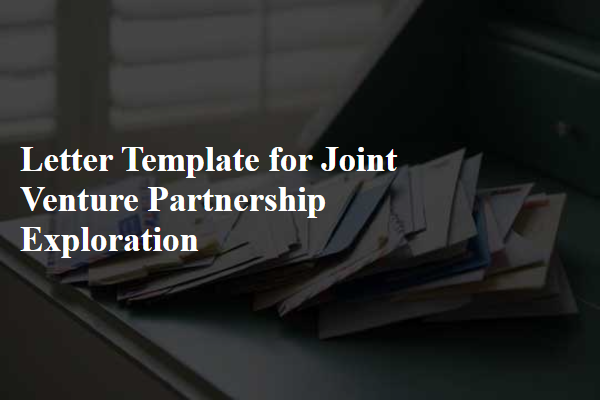Are you looking to establish a partnership that requires confidentiality? A well-crafted confidentiality agreement is vital to ensuring that sensitive information remains protected between the parties involved. In our article, we'll guide you through the essential components of a partnership confidentiality agreement and provide a clear and effective template you can customize to fit your specific needs. Ready to explore how to safeguard your partnership details? Keep reading to find out more!

Purpose of Agreement
The Purpose of the Partnership Confidentiality Agreement is to establish a legally binding arrangement between the involved parties to protect sensitive information disclosed during the course of their partnership. This includes proprietary data, trade secrets, business strategies, and any other confidential material relevant to the collaboration. The agreement aims to foster a trustworthy environment, enabling the parties to share essential information freely without the risk of unauthorized disclosure to competitors or third parties. Compliance with this agreement ensures mutual respect for intellectual property and reinforces the integrity of the partnership, essential for achieving shared goals and objectives.
Definition of Confidential Information
Confidential information, in the context of a partnership confidentiality agreement, refers to any data or knowledge that is not publicly available, which is disclosed or shared by one party (the discloser) to another party (the recipient). This may include, but is not limited to, proprietary business strategies, financial records, customer lists, product designs, technical specifications, marketing plans, or any other sensitive information that could harm the discloser's competitive position if disclosed. The definition aims to protect intellectual property and maintain trade secrets, thereby ensuring that all parties involved in the partnership, such as Company A and Company B, understand and respect the importance of safeguarding this information. Confidential information also encompasses any notes, summaries, or derivatives created based on the disclosed information. Protection extends beyond the duration of the partnership, ensuring continuous confidentiality obligations.
Obligations of Receiving Party
The obligations of the Receiving Party in a partnership confidentiality agreement encompass critical responsibilities surrounding the handling of confidential information, which may include trade secrets, business strategies, intellectual property, and proprietary data. The Receiving Party must implement reasonable measures to safeguard this information, ensuring it is not disclosed to unauthorized individuals or entities. This entails using the same degree of care as used in protecting their own confidential materials, typically no less than a standard of "reasonable care." Furthermore, the Receiving Party must limit access to confidential information strictly to individuals who require it for the purpose of the partnership and must refrain from utilizing any confidential information for personal gain or unauthorized purposes. Additionally, upon the termination of the partnership or upon written request from the Disclosing Party, the Receiving Party must promptly return or destroy all materials containing confidential information, ensuring that such data is no longer accessible. Breach of these obligations may result in legal repercussions, including potential claims for damages or injunctive relief to prevent further disclosure.
Exclusions from Confidentiality
In the context of a partnership confidentiality agreement, exclusions from confidentiality refer to specific instances where certain information is not considered confidential and may be shared or disclosed without breaching the agreement. Common exclusions include information that is publicly available, previously known to the receiving party, independently developed by the receiving party without reference to the confidential information, or disclosed with the prior written consent of the disclosing party. This clarification ensures all parties understand the boundaries of what remains confidential during collaboration in business ventures, protecting essential proprietary information while allowing for practical exchanges when necessary, such as in the case of regulatory requirements or legal proceedings.
Term and Termination
Partnership confidentiality agreements are crucial for protecting sensitive information shared between parties. The "Term" section typically outlines the effective duration of the agreement, often starting from the date signed and lasting for a specified number of years, such as three to five years. The "Termination" clause describes the conditions under which the agreement can be ended by either party, such as mutual consent, breach of terms, or completion of the purpose for which the partnership was created. Obligations regarding the return or destruction of confidential information following termination are also emphasized, ensuring that both parties understand their responsibilities in safeguarding proprietary data even after the partnership concludes.
Letter Template For Partnership Confidentiality Agreement Samples
Letter template of Partnership Confidentiality Agreement for Business Collaboration

Letter template of Partnership Confidentiality Agreement for Joint Venture

Letter template of Partnership Confidentiality Agreement for Research Project

Letter template of Partnership Confidentiality Agreement for Non-Profit Collaboration

Letter template of Partnership Confidentiality Agreement for Product Development

Letter template of Partnership Confidentiality Agreement for Licensing Negotiations

Letter template of Partnership Confidentiality Agreement for Mergers and Acquisitions

Letter template of Partnership Confidentiality Agreement for Consulting Services

Letter template of Partnership Confidentiality Agreement for Strategic Alliances





Comments